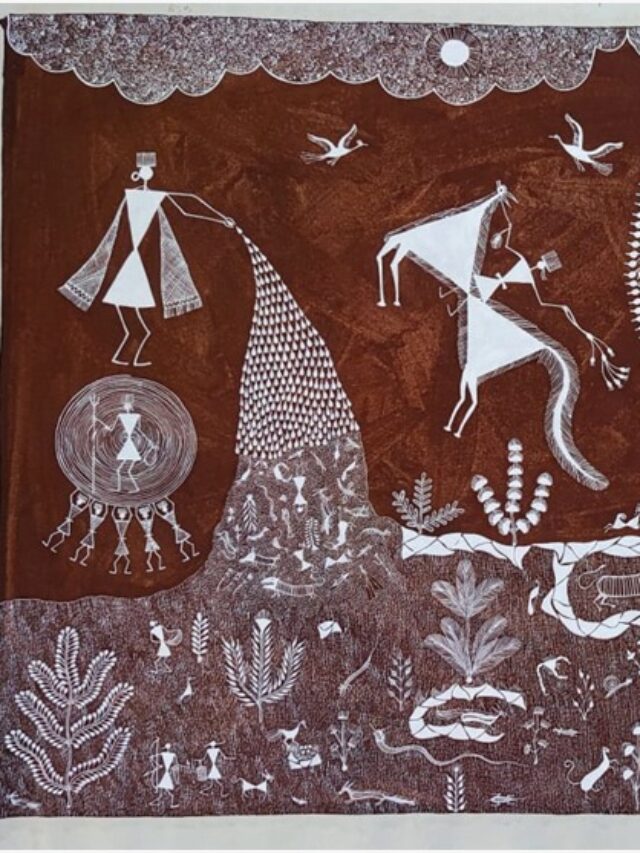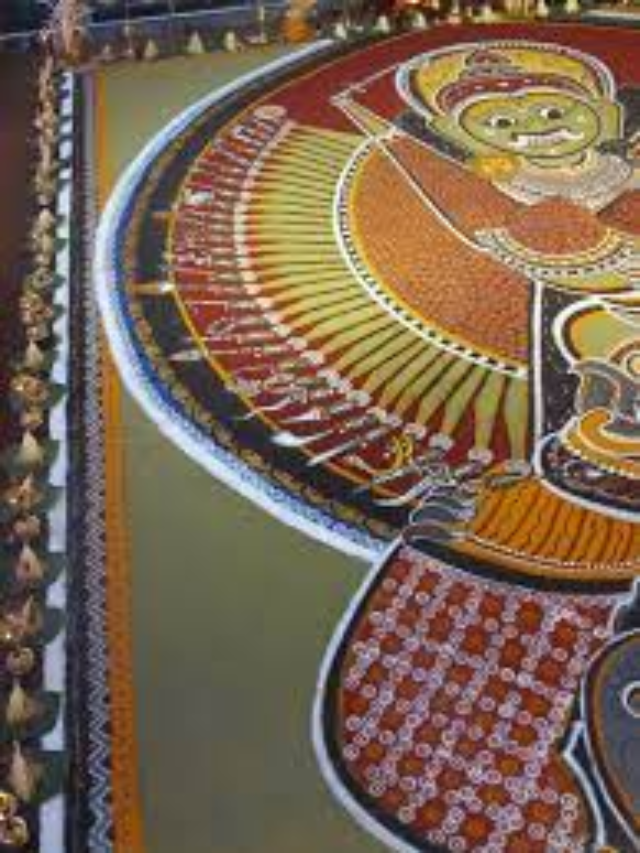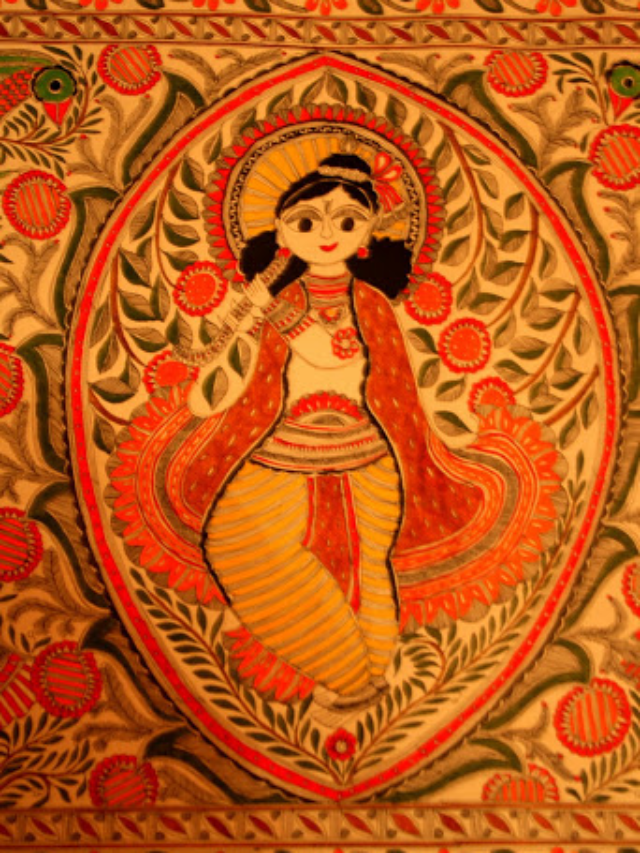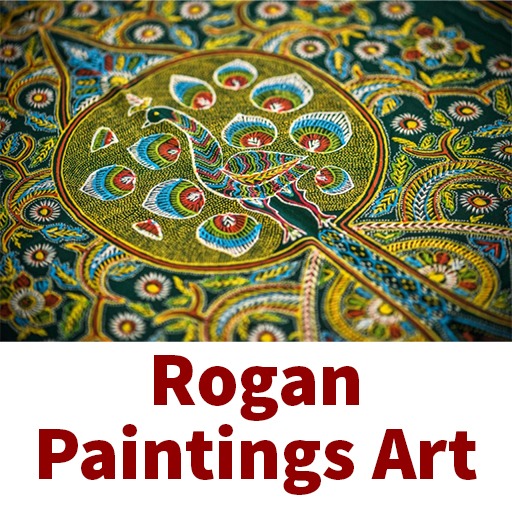A four-century-old “Rogan art” is only practiced in the Kutch district of Gujarat, India. Rogan art was nearly extinct until recent times, but one family’s efforts saved it. Castor oil, which is a necessary component of the paint, gives the medium its name.
The Persian term “Rogan” implies “oil-based.” Some people think that Rogan art first appeared in Persia before moving to India. An exhausting technique is required to create Rogan fabric paintings. First, a cauldron is used to continuously boil castor seed oil for 12 to 14 hours. The entire procedure lasts about two days. When heated castor oil is combined with cold water, Rogan is formed.
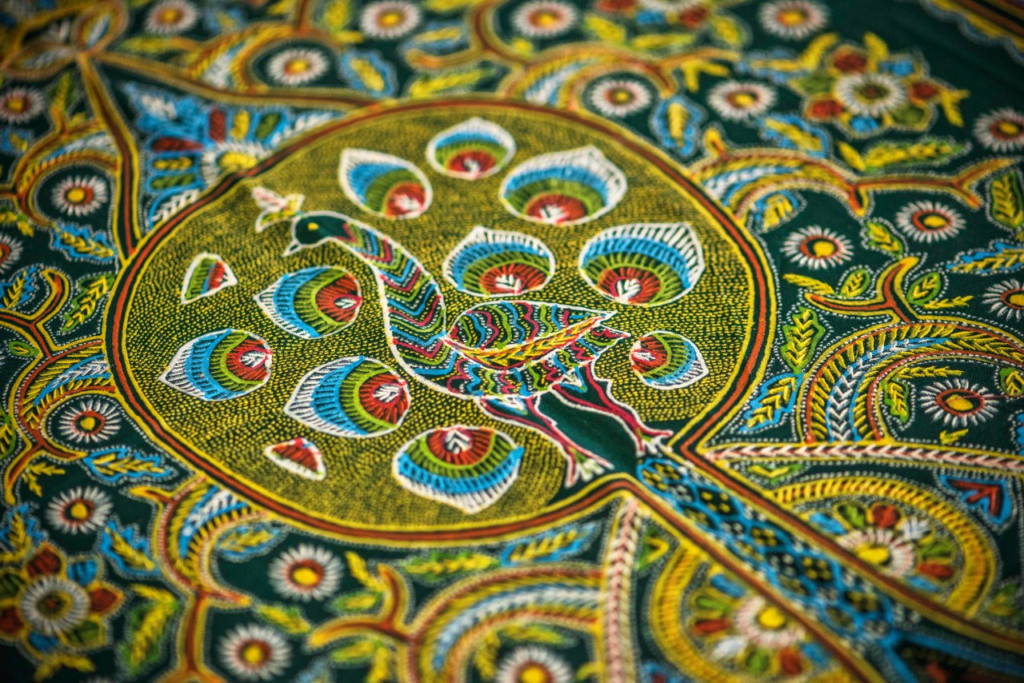
Ancient Artwork:
Rogan painting, a 400-year-old hereditary art form, is considered to be ancient. It was allegedly only practiced in the Gujarat region and is believed to have begun with Muslim Khatris. Historically, bed coverings and bridal attire featured Rogan art. The art’s audience was limited to the Kutch region until recently.
One needed to be a male descendant of a Rogan artist heritage to practice the craft. Women were in charge of running the home, taking care of the family, and perhaps performing Bandhani work. Regrettably, these traditional specifications for Rogan painting made the genre particularly vulnerable to extinction. Earlier, Rogan art was practiced by numerous Gujarati households.
There is currently just one family left. Those who practiced the craft had difficulty making ends meet and were forced to seek new occupations as machine-made industrialized textiles replaced handmade Rogan artwork in the 1980s.
Revival of Rogan Paintings Artwork:
Since the 1980s, the Khatri household in Gujarat’s northwest has been working to revitalize the form of art by painting items other than ceremonial garments, holding exhibitions, and raising awareness of it. In 2014, when the Prime Minister of India (Modi) gave former the United States President Obama a work of Rogan artwork by Abdul Gafur Khatri that portrayed the tree of life, the art underwent a remarkable renaissance.
After that, visitors flocked to Kutch in droves to watch the Khatri family create their artwork. The art needed to be reinvented to be revived and preserved. The family started instructing ladies in their village in the technique in 2010. More than 300 women are currently qualified to practice the Rogan painting art. The family also actively engages in conferences, shows, and seminars to promote Rogan painting art internationally.
The Khatri family started painting many objects, including apparel, accessories, and even house décor. As a result of the Covid-19 pandemic’s spike in popularity, their patterns can be seen on masks. The family is also attempting to make their creations better. The Khatri family’s primary source of income comes from tourists, therefore the epidemic seriously hurt their business by stopping the flow of visitors. However, the family changed their approach and started using online channels to share their paintings with the globe.
Although Rogan painting art techniques and procedures are now widely known, the genuine expertise is buried in the nuanced particulars that are exclusively recognized by the Khatri family. Eight generations of the family have carried on this four-century-old custom.
Process of Making:
The artists of this distinctive art style typically choose to utilize dark materials because they bring out the vivid colors of their paint. The artist spreads out the fabric in front of him and uses the rod to start mixing some paint in his hand. The motion of swirling the paint provides it with the proper texture, making it a crucial step in the painting process. Just enough of the thick paint is loosened by the palm’s heat to allow the artist to create a thread. The artist’s imagination must fill in the blanks. The artist applies paint to the fabric in tiny lines by moving the rod above the material.
Freehand painting is used, and the finished piece has an embroidery-like appearance. Mandala and floral patterns are the most common styles in Rogan painting art. The tree of life is perhaps the most loved design, but it is also the one that requires the most effort to create.
The classic Rogan painting artwork features a lovely spectrum of vivid oil colors. In contrast with the dark fabric’s canvas, it is typically constructed using dark colors. The Tree of Life, peacocks, and geometric flowers are just a few of the symbols that frequently appear in Kutch and Persian folktales.
The secret of Rogan Painting Artwork:
Rogan’s painting begins with the creation of its unique paint, which is made from indigenous castor seeds, whose oil is cooked for more than twelve hours while being stirred constantly. It takes a lot of work to boil the oil, and this is certainly relevant in the forest. This is because the boiled oil emits powerful odors that require an open environment to dissipate. Due to this, traditionally, this process is usually carried out by the males of the home. The leftover oil is then chilled and combined with colors to form Rogan, which means oil-based.
In the end, this produces a thick paint with brilliant colors and a special consistency that enables the artist to manipulate it on the fabric while standing back. As you may expect, a key factor is the paint’s consistency. If it is excessively thick, it won’t be as malleable as needed, and if it is excessively thin, it won’t be strong enough to keep its constant string-like nature. For four centuries ago, the Rogan’s artisans have maintained the precise process of manufacture and the makeup of the paint a secret. Today, only a small number of homes still apply this technique.
Demand of Rogan Paintings:
The demand for these paintings on fabrics was minimal. Abdul Gafur Khatri had given up on his ability to support himself through the art form that had been handed down through his family for generations. In the early 1980s, he left his hometown of Nirona in search of employment in Ahmedabad and later Mumbai. However, after two years, he received a letter from home, which ended his quest. He was required to return home since the Indian government had such a program for the family.
Abdul Gafur Khatri understood his significance in upholding his ancestors’ history after his homecoming. The art would disappear if he gave up on it. He battled through poverty with this sense of obligation and pledged to preserve the art. He has been practicing Rogan painting artwork for close to fifty years as of right now. Other Khatri men are also practicing the craft, so it is not just him.
There are approximately ten individuals in the Khatri family who practice traditional Rogan painting artwork, the majority of whom have won awards. The Khatri family has been practicing the craft for roughly (300 years) even though it has been around there for 4 centuries.
For more posts like this visit Tribal Handcrafts blog.
